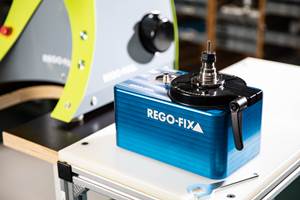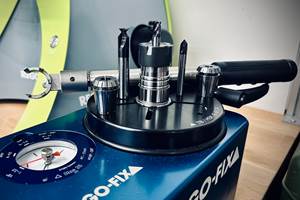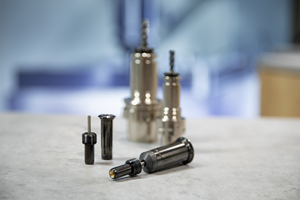Strict Tooling Policy Ensures Engraving Shop’s Quality
True Mark Engraving Co. needed precise toolholders to improve the working life of its cutters. Rego-Fix fit the bill.
Share





Some would say that True Mark Engraving Co. of Cleveland, Ohio, goes a bit overboard with its tooling rituals, but according to owner and President Dave Timura, the shop’s meticulous methodology maintains process consistency and ensures no other engraving shop can compete with its quality. To ensure the working life of its cutters, True Mark relies on tooling from Rego-Fix (Indianapolis, Indiana), along with in-house cutting tool grinding and replacing machine tool spindles when they run out as little as 0.0001 inch.
True Mark machines and engraves dies for a wide variety of industries and applications, including valves, high-end fittings and bolt heads. It also produces hot stampers for marking plastic parts such as oven dials, inserted-type dies that mark date codes on products and dies for forging companies. Most of the engraving work involves dies that mark final products. These dies are typically made from tool steels such as D2 and M2, and many of them are tiny and intricate. In fact, some letters/characters are so small it is impossible to read them with the naked eye. Representative of its high-end work is one of the smallest die blanks True Mark produces. This die’s machined letters are no taller than 0.004 inch from top to bottom, while the largest characters on other projects can measure up to 1-inch tall. The engraving process also requires the use of tiny, single-flute, custom-made cutters that must work at zero runout when taking 0.001-inch depths of cut. The shop has several recurring projects, and turnaround times for jobs vary anywhere from two hours to a couple of weeks. Typical lot sizes range from one to six parts, but the shop can take on 300-piece jobs as well.
Mr. Timura says that when he took the helm at True Mark in 1999, business was basically stagnant in terms of new work, profit and any kind of equipment investments, so his first order of business was to improve the shop’s quality and shorten job turnaround times. Now, the company follows very specific procedures when it comes to toolholder usage.
It begins by assigning every one of its toolholders to a specific CNC milling machine. Each machine’s designated group of holders is stored in racks marked with numbers corresponding to that particular machine. Also, the shop’s individual collets each run in a designated holder. Collets do not move from one holder to another, nor do toolholders move from machine to machine. The holders are stored in the same positions, and they are loaded into spindles with brand names facing toward the front of the machine. Additionally, only certain machines run certain-size-diameter toolholders. For example, a machine will never run a 0.25-inch-diameter holder one day then a 0.5-inch-diameter holder the next. Plus, every holder must run through an ultrasonic cleaning system any time it is detached from the spindle or has a cutter removed from it. Machine tool spindle interfaces are thoroughly cleaned as well.
“I admit it. I’m funny about my tooling,” Mr. Timura says. “But in addition to my specific holder procedures, I use only Rego-Fix tooling in my CNC machines and have ever since we transitioned from manual pantograph-type engraving machines to our first of several CNC mills. Once we saw the benefits and how easy the system works, we were hooked.”
True Mark uses Rego-Fix ER collets and the powRgrip (PG) system, which includes holders and tool loading/clamping units. Unlike other clamping systems that use heat or hydraulics to expand the holder, the PG system is designed to use the mechanical properties of the toolholder material to generate high gripping force with runout smaller than 0.0001 inch. Each surface interface, from the toolholder to collet and collet to cutter, is key to a PG holder’s vibration damping and high-transferable-torque capabilities, even after 20,000 cutter exchange cycles.
True Mark’s machining processes typically require smaller-sized cutters, so the company primarily runs PG 10 holders for cutter diameters between 0.0787 and 0.2362 inch. The shop’s largest collets are 0.250 inch in diameter, and machine spindle interfaces vary from HSK 63F to ISO 20 and 30 tapers. The shop has two manual PG clamping units, and programmer/machinist Cassie Timura, Mr. Timura’s daughter-in-law, does most of the tool cleaning and tooling setups. However, any of the shop’s four employees can operate the Rego-Fix system when necessary.
Rego-Fix products make up approximately 95 percent of True Mark’s tooling, with the remaining 5 percent consisting of other types of tooling for the shop’s manual machines. Each CNC machine is assigned 15 to 20 Rego-Fix holders—either ER collets or PG holders or both.
“I’ve looked at heat-shrink, and, in my opinion, it takes way too long to load and unload cutters,” Mr. Timura says. “Plus, we need as much working life out of our holders as possible, and heat-shrink only lasts so long. We’ve had most of our Rego-Fix tooling for more than seven years and have yet to replace any of the holders or collets due to wear. Even our very first Rego-Fix holder is still in use. There is a bit more cost involved with the tooling, but it’s a non-issue considering the performance, quality and longevity Rego-Fix brings to the table.”
Mr. Timura checks the shop’s CNC machine spindles dutifully, so he knows how each and every one of them is performing. He says it is typical for him to load a cutter in a factory-prebalanced Rego-Fix holder and get zero runout when checking with a 0.0001-inch-increment indicator. “It’s totally amazing,” he says. “And, if there is runout, I can confidently rule out the Rego-Fix tooling as the cause and go right to checking the spindle itself.”
The engraving process uses the very tip of the cutters, and any surface imperfection or off-center split in a cutter’s geometry worsens at the tip. Therefore, any flaw in the toolholder or the machine tool’s spindle will significantly shorten the cutters’ working lives and ruin an entire engraving job. That’s why True Mark grinds its own solid-carbide, single-edge cutters for engraving die blanks. According to Mr. Timura, the shop sees better performance with the cutters it makes itself. While they may look like a simple 45-degree cutter with a split, the finish and size of the tool points are different than those of off-the-shelf cutters. The shop makes its cutters from 12-foot barstock, which a local grinding shop cuts it to individual tool lengths, and roughs in the general shapes and splits of each tool. True Mark finishes the split and grinds the critical angle of the tool’s cutting edge. For the final step, the company manually polishes each tool to remove any grind lines or waviness, and ensure splits are precisely centered.
Depending on workpiece material and character size, cutter life can range from several hours to mere minutes, with total machining times also varying, the company says. To determine cutter life, the shop examines each finished part under a microscope. This visual information, along with past experience, establishes a reference point for how long cutters will last when processing particular materials and character sizes. With some parts, however, cutter wear is highly visible without a microscope.
The tools at True Mark typically operate at speeds of 25,000 or 30,000 rpm, with some running as fast as 40,000 rpm. Roughing and finishing cutter geometries differ from one another, and most jobs can be completed using a total of four or five cutters.
Some may call the steps it takes extreme, but by grinding its own cutters, following a specific tooling methodology and using Rego-Fix toolholders, True Mark is able to ensure continuous machining precision.
Related Content
Five Common Mistakes Shops Make with ER Collets (And How to Prevent Them)
Collets play a crucial role in the machining process, so proper tool assembly and maintenance is important. Here are five potential pitfalls to avoid when using ER collets.
Read MoreMaking the Most of Mixed Toolholder Assemblies
While nearly all ER systems will have cross compatibility, they’ll have small differences across manufacturers that make their implementation at the shop level not as standard.
Read MoreRego-Fix Toolholding System Reduces Coolant Consumption
MQL PG collets are designed for machines using one-channel, internal through-spindle MQL systems.
Read MoreRego-Fix’s Center for Machining Excellence Promotes Collaboration
The new space includes a showroom, office spaces and an auditorium that will enhance its work with its technical partners.
Read MoreRead Next
Setting Up the Building Blocks for a Digital Factory
Woodward Inc. spent over a year developing an API to connect machines to its digital factory. Caron Engineering’s MiConnect has cut most of this process while also granting the shop greater access to machine information.
Read More5 Rules of Thumb for Buying CNC Machine Tools
Use these tips to carefully plan your machine tool purchases and to avoid regretting your decision later.
Read MoreBuilding Out a Foundation for Student Machinists
Autodesk and Haas have teamed up to produce an introductory course for students that covers the basics of CAD, CAM and CNC while providing them with a portfolio part.
Read More


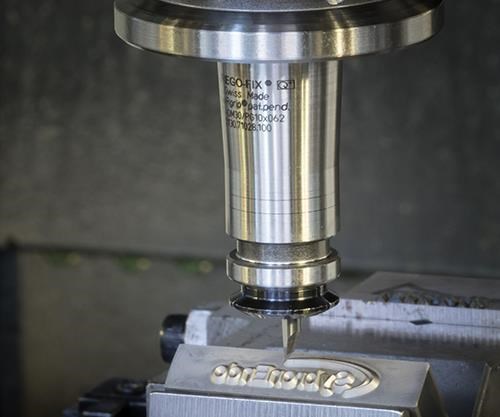
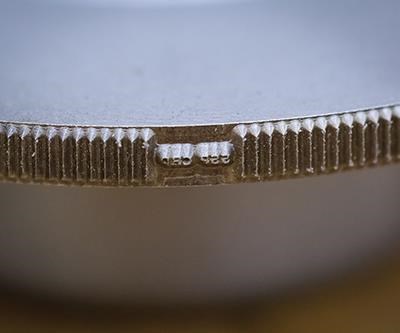

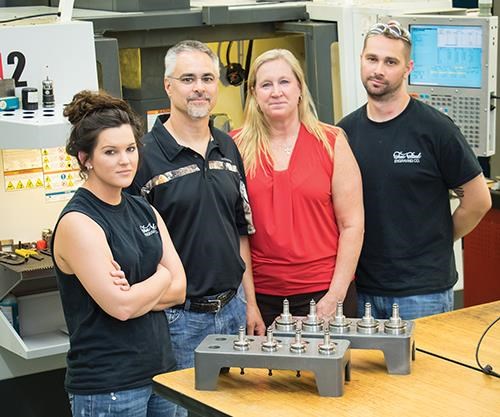





















.jpg;maxWidth=300;quality=90)







